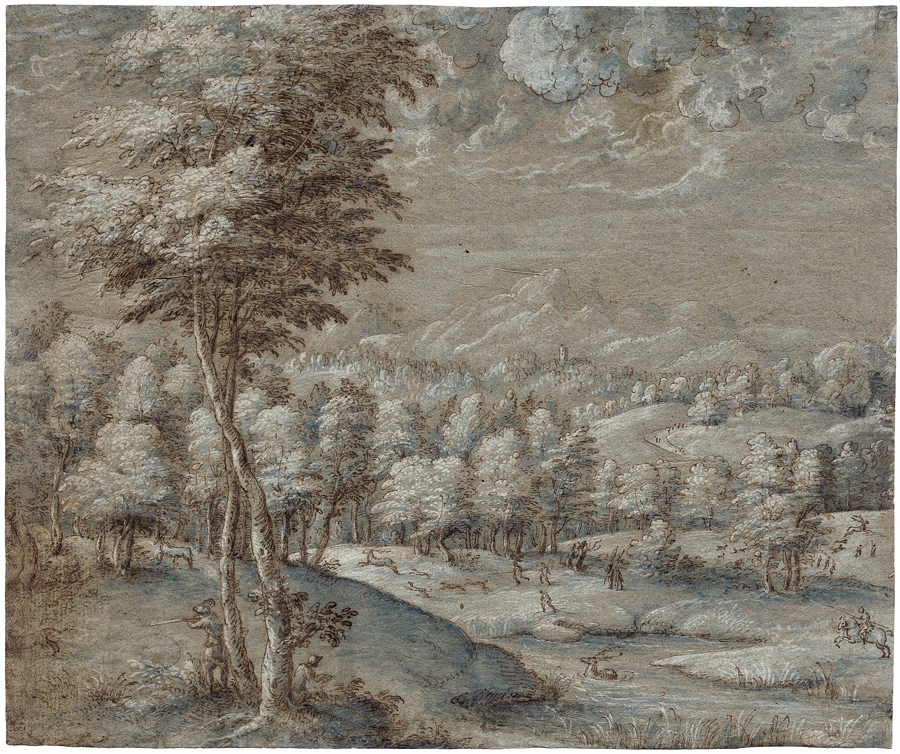Loading the page ...
Gherardo Cibo
(1512 Genoa – 1600 Rocca Contrada)
Landscape with a Deer Hunt. Pen and brown ink, with blue wash and heightened with white, on blue paper. 19.9 x 24.4 cm.
This landscape study, executed with great finesse and convincing spatial depth, is known to be the work of the Italian painter Gherardo Cibo, who was also a botanic and landscape draughtsman. A fascinating and productive artist, his oeuvre has a remarkable history which has been the subject of a lively debate among experts in the recent past. In 1969, Jaap Bolten provided the first-ever reconstruction of the entire corpus of drawings, attributing it to Messer Ulisse Severino Da Cingoli (see J. Bolten, “Messer Ulisse Severino Da Cingoli, a bypath in the history of art”, in: Master Drawings, vol. 7, no. 2, 1969, pp. 123-147, 184–204). An exhibition of the artist’s work staged in San Severino in 1989 led to new findings, however. As a result, the considerable, stylistically consistent corpus of drawings was attributed instead to Gherardo Cibo, an outcome which Bolten himself accepted (Master Drawings vol. 28, no. 2, pp. 193–196).
Born into an aristocratic family, Gherardo Cibo spent his youth at the Papal Court and was entrusted by Emperor Charles V with military and diplomatic missions in Germany, France and Flanders. In 1540, however, he withdrew to Rocca Contrada, where he was to spend the rest of his life in voluntary seclusion. From an early age Cibo took a keen interest in natural sciences, attending lectures in botany at the University of Bologna. He also distinguished himself as an illustrator, in which capacity he was held in high regard by contemporary scientists such as Ulisse Aldrovandi and Pietro Andrea Matteoli. His illustrated Herbarium at the British Library, in which meticulously drawn plant studies of superb quality are accompanied by finely executed gouache landscapes, is justifiably regarded as one of the most significant scientific publications of the sixteenth century. The Herbarium also proved crucial in the compilation of the large body of landscape drawings dating to between 1560 and 1600, which are now in prominent museum collections. The aforementioned Ulisse Severino appears to have been a close acquaintance of the artist; his name appears several times in Cibo’s botanical records.
The pronounced influence of Flemish landscape art on Cibo’s drawing style, which is readily apparent in this work, is probably the outcome of Cibo’s stay in Flanders during the spring of 1540. The spacious, multilayered arrangement of the landscape is typical of Cibo’s work. The tiny staffage figures which invigorate the scene contribute considerably to the fascination of these delicately and sensitively executed landscapes. Just how close Cibo’s style was to the Flemish formal idiom is apparent from the fact that many of his drawings were attributed in the past to such widely varying masters as Roelant Savery, Mathijs Bril, Paolo Fiammingo and Joachim Patinir.
